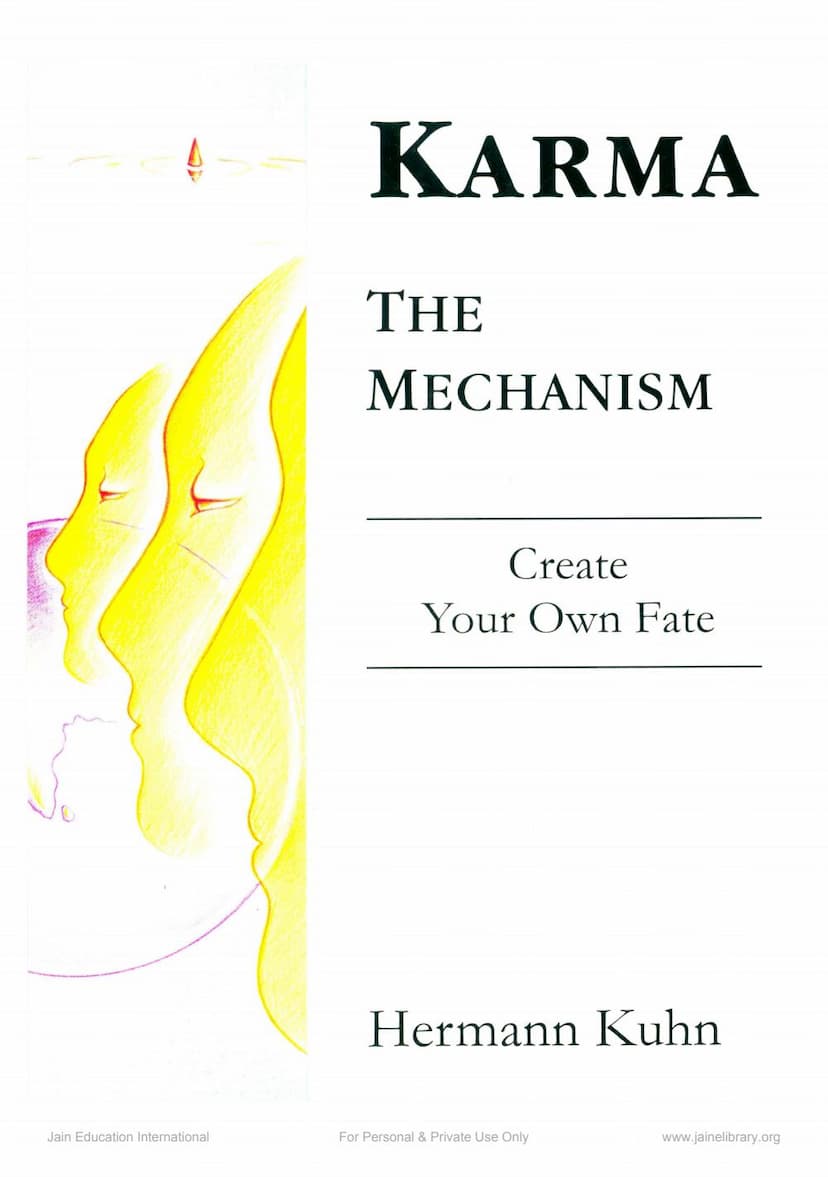Karma The Mechanism
Added to library: September 2, 2025

Summary
Here's a comprehensive summary of Hermann Kuhn's "Karma the Mechanism: Create Your Own Fate," based on the provided text:
Core Premise:
The book, drawing heavily from the ancient Jain scripture Tattvarthasutra, presents karma not as a mystical or fatalistic force, but as a mechanism of daily life that influences our experiences and destiny based on our actions, intentions, and emotions. It aims to demystify karma, revealing it as a practical tool for personal growth and self-determination. Kuhn argues that Western interpretations of karma are often flawed and incomplete, leading to misconceptions about its true nature and potential.
Key Concepts and Themes:
- Karma as a Mechanism, Not Fate: The book emphasizes that karma is not a predetermined destiny. Instead, it's a natural law of cause and effect driven by our own actions and mental states. We are not victims of karma but active participants in its creation and dissolution.
- The "Interactive Karmic Field": Karma is described as a subtle matter that surrounds our consciousness, forming an "interactive karmic field" or "karmic body." This field is shaped by our intentions, desires, and the emotional intensity of our actions.
- Action in the Present: The Tattvarthasutra defines karma as "action happening in the present." Karmic effects are experienced immediately alongside our activities, not in a distant future or past life. These effects can be felt as opening or closing possibilities in our lives.
- Consciousness vs. Karma: Consciousness (jiva) is presented as independent and alive, while karma is a subtle, non-living matter (ajiva) that interacts with it. The mixing of these two components creates our experienced reality.
- Two Modes of Karma: Punya and Paapa:
- Punya (Positive Karma): Results from "good" or "virtuous" activities and leads to agreeable experiences, furthering inner growth.
- Paapa (Negative Karma): Results from "bad" or "evil" activities and leads to disagreeable experiences, obstructing inner growth.
- The true criterion for good/bad karma is whether it supports or hinders inner development and the perception of one's true nature.
- Intensity and Duration of Karma: The intensity and duration of karmic effects are determined by:
- The intensity of our emotional engagement with an action.
- Whether the impulse for action originates within us or from external influences.
- The degree of our involvement (direct action, instigation, or silent assent).
- The presence of negative passionate emotions (anger, pride, deceit, greed).
- Eight Types of Karma: The Tattvarthasutra classifies karma into eight main groups, each affecting different aspects of our existence:
- Jnana-varana: Obstructs access to knowledge (sensory, scriptural, extra-sensory, mental perception, omniscience).
- Darshana-varana: Prevents insight and understanding, and can manifest as sleepiness, fatigue, etc.
- Vedaniya: Determines our feeling of life (pleasant or unpleasant emotions).
- Mohaniya: Causes delusion, obstructing orientation towards growth and right action, manifesting through negative emotions and specific tendencies.
- Ayu: Determines the duration and place of future embodiments (infernal, celestial, human, animal/plant).
- Nama: Determines physical form and features, including body shape, senses, attractiveness, and even the body of a tirthankara (an omniscient teacher).
- Gotra: Determines social status.
- Antaraya: Causes obstructions in life, hindering giving, receiving, enjoying, and utilizing one's capacities.
- The 14 Stages of Development (Gunasthanas): The book elaborates on the Tattvarthasutra's description of 14 stages of consciousness development that individuals pass through on their journey towards liberation. These stages are not strictly linear but involve dynamic shifts, with insights into higher stages often occurring even at lower levels. Each stage is characterized by the types and intensities of karma manifesting.
- The Five Freedoms: These are presented as key actions and attitudes that accelerate spiritual growth, rather than strict vows. They emphasize understanding, compassion, craving for truth, recognizing inner resources, the intention to grow, and diminishing attachment to material possessions. Kuhn argues this interpretation is more aligned with the dynamic, expansive nature of Jain philosophy than conventional Jain vows.
- Reincarnation as a Process of Manifestation: Reincarnation is framed as a natural consequence of our desires and unexpressed ideals, providing opportunities to manifest what we carry within. Death is presented as a transition, similar to dreaming, where consciousness shifts to new environments that facilitate the manifestation of these desires.
- Dissolving Karma (Nirjara): The book outlines practical methods for dissolving existing karma and preventing the binding of new karma. This involves:
- Samvara: Blocking the initial attraction to karma by conscious action, speech, and thought, free from intense negative emotions.
- Tapas: Intentionally confronting karma by creating emotionally charged situations to accelerate its dissolution. This requires courage and a shift in perspective from fear to seeing challenges as opportunities for growth.
- Gupti: Consciously directing thoughts, speech, and action intelligently.
- Samiti: Performing daily activities with awareness.
- Dharma: Considering the needs of others through forgiveness, humility, direct communication, purity of intention, honesty, alertness, resolving issues, letting go of limitations, and the intention to grow.
- Anupreksha: Reflecting on core principles like impermanence, the role of karma in our lives, the nature of consciousness, and the purpose of existence.
- Parisah-jaya: Patiently persevering through obstacles that may arise during spiritual practice.
- Practical Application: The book encourages readers to apply these principles to their daily lives, treating their spiritual journey as an adventure. It provides a checklist of actionable steps, including making a list of aspirations, living vegetarian, embracing discomfort for growth, and confronting fears.
Author's Approach:
Hermann Kuhn's approach is to demystify karma by grounding it in observable psychological and behavioral mechanisms. He bridges ancient Eastern wisdom with a practical, Western-oriented perspective, aiming to make these profound teachings accessible and applicable for modern individuals seeking meaning and self-mastery. He stresses that real progress comes from understanding and applying the principles, not from mere ritualistic repetition or passive waiting for enlightenment.